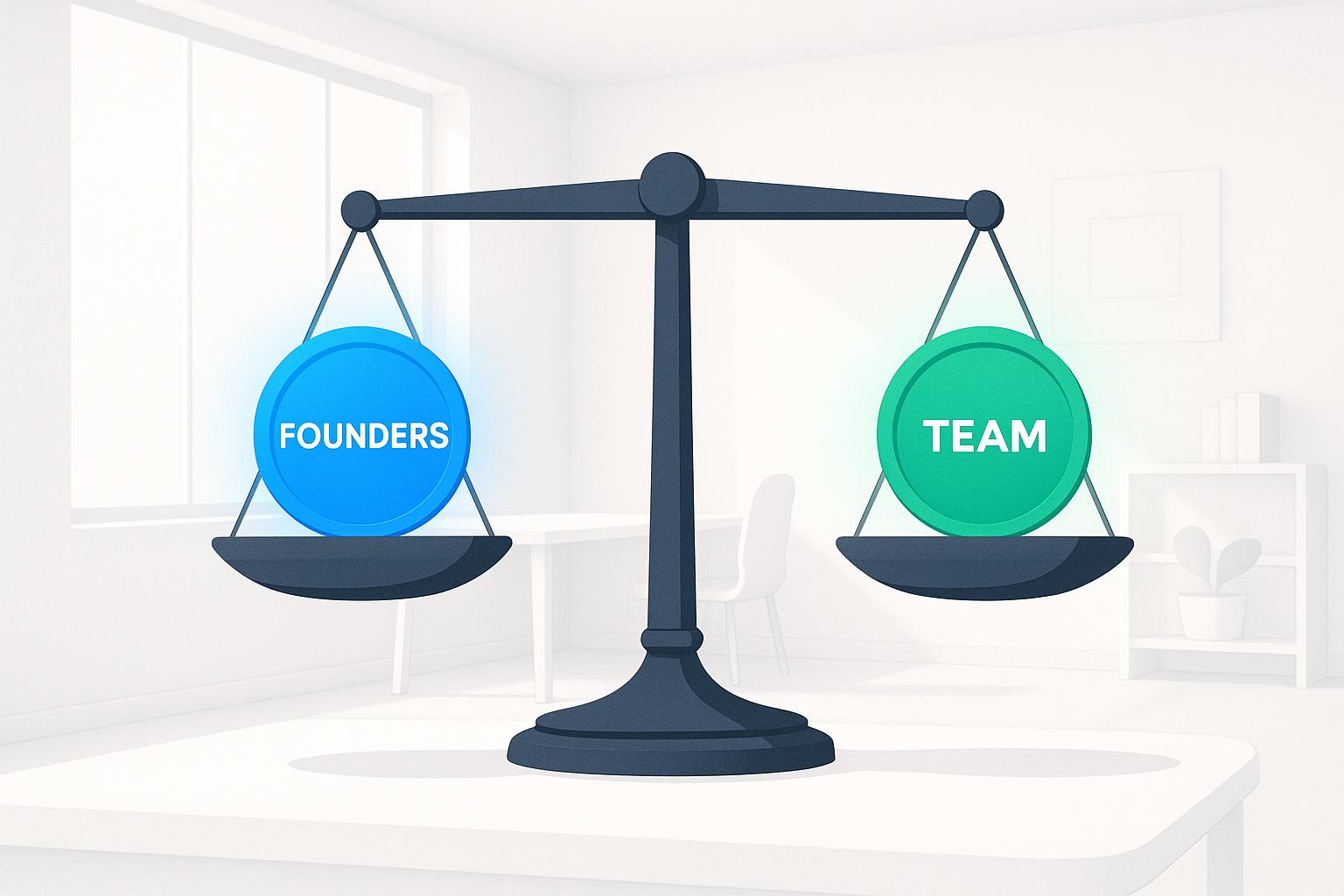Want to measure your SaaS startup’s performance? Here’s what you need to know:
- Revenue per Employee: The 2024 median is $125,000. Bootstrapped companies average $108,000 ARR efficiency per employee, while equity-backed ones hit $73,333.
- Spending Benchmarks: Bootstrapped SaaS companies spend 93% of ARR, focusing on sustainability. Equity-backed ones spend 109%, prioritizing growth.
- Retention Metrics: Aim for strong GRR (customer retention) and NDR (revenue growth from upsells).
- Burn Efficiency: Track Burn Multiple (cash burned vs. ARR) and CAC Payback Period (time to recover customer acquisition costs).
- AI Tools: Platforms like Lucid Financials reduce errors by 20% and improve forecasting by 15%, helping startups align with benchmarks.
Key 2024 SaaS Success Metrics:
| Metric | Target |
|---|---|
| Revenue Growth | >30% |
| Free Cash Flow Margin | 10-20% |
| Revenue per Employee | $125,000 |
| AI Integration ROI | 25% growth boost |
Use benchmarking to uncover gaps, improve efficiency, and make smarter decisions. Embrace AI-driven tools to stay competitive and meet these industry standards.
Do I Really Need to Use SaaS Metrics Benchmarks?
Important Metrics for SaaS Benchmarking
Understanding key financial metrics is essential for gauging your SaaS startup's performance against industry standards. Let’s break down some of the most important metrics that can guide your business decisions.
Annual Recurring Revenue (ARR)
Annual Recurring Revenue (ARR) is a cornerstone metric for assessing the health of a SaaS business. Bootstrapped companies tend to achieve higher ARR efficiency - $108,000 per employee - compared to equity-backed companies, which average $73,333 per employee [1]. This difference highlights varying operational approaches. While ARR gives a big-picture view of revenue health, retention metrics like GRR (Gross Revenue Retention) and NDR (Net Dollar Retention) provide deeper insights into revenue stability and growth.
Retention Metrics: GRR and NDR
Retention metrics like GRR and NDR shed light on how well your business retains customers and grows revenue. Here’s how they differ:
| Metric | What It Measures | Why It Matters |
|---|---|---|
| GRR | Revenue retained from existing customers | Indicates how well your core product keeps customers |
| NDR | Revenue including upsells and expansions | Highlights growth potential from your current customer base |
"The Rule of 40, which measures the combination of growth rate and operating profitability, has become an essential benchmark for evaluating SaaS company performance in 2024" [3].
Burn Multiple and CAC Payback Period
The Burn Multiple (cash burned vs. ARR generated) and CAC Payback Period (time to recover customer acquisition costs) are key indicators of capital efficiency. In 2024, SaaS companies are experiencing challenges with Blended CAC Ratios and Net Revenue Retention, pointing to tougher growth conditions [3]. These metrics help businesses understand how effectively they turn spending into lasting revenue.
AI-driven tools like Lucid Financials make it easier to track these metrics in real time, offering insights into ARR, retention rates, and efficiency. This automation supports faster, data-based decisions tailored to industry benchmarks and your company’s unique trends.
sbb-itb-17e8ec9
AI Tools for Financial Planning in SaaS
How AI Improves Financial Planning
AI has reshaped financial planning by automating complex analyses and boosting forecasting precision. Today's AI-powered tools simplify the process while offering real-time data and predictive insights. A Benchmarkit study found that SaaS companies using these tools saw a 20% drop in financial planning errors and a 15% improvement in forecasting accuracy.
These tools work by analyzing multiple data sources in real time, using historical patterns to create predictive models, and automating reports. This streamlining allows businesses to allocate resources more efficiently and make smarter, data-backed decisions.
Using Lucid Financials for SaaS Planning

Lucid Financials stands out as a go-to platform for SaaS financial planning. It integrates seamlessly with tools like QuickBooks, payroll systems, and banking platforms. Key features include scenario comparisons, real-time data syncing, and automated investor reports. These capabilities help startups align their growth strategies with industry standards and quickly adapt to market shifts.
For SaaS startups aiming to scale effectively, AI tools like Lucid Financials provide the insights needed to make informed decisions about budgeting, hiring, and growth plans. The ability to create instant financial plans and evaluate multiple scenarios ensures businesses can respond to changes in the market while staying financially responsible.
With platforms like Lucid Financials, SaaS companies are better positioned to stay ahead in a competitive and ever-changing industry.
Trends and Insights for SaaS Startups
SaaS Funding Trends in 2024
In 2024, SaaS funding is leaning heavily toward companies that incorporate AI-driven solutions. These businesses are growing 25% faster than their non-AI counterparts [3]. Investors are prioritizing efficiency, with equity-backed firms spending 109% of ARR, compared to 93% for bootstrapped companies [2]. This trend highlights the need for startups to balance fast growth with operational efficiency to attract funding and maintain scalability.
Balancing Growth and Efficiency
For SaaS startups, the focus has shifted from chasing rapid growth to achieving sustainable scaling. The median revenue per employee in the industry has reached $125,000 in 2024 [1], serving as a key benchmark for operational efficiency.
"A growth rate of greater than 30% combined with a Free Cash Flow Margin of 10% - 20% represents the ideal combination for maximizing enterprise value to revenue multiples." - Meritech Capital [3]
Startups that hit these metrics excel in both acquiring and retaining customers. They also maintain strong NRR (Net Revenue Retention) and GRR (Gross Revenue Retention) while keeping spending in check.
AI as a Competitive Tool for SaaS
AI is now a game-changer for SaaS startups aiming to scale effectively. Its benefits go beyond product enhancements, impacting core operations and driving overall business performance. Here's how AI is making a difference:
| Area | Impact of AI Integration |
|---|---|
| Financial Forecasting | 20% fewer errors, 15% better accuracy |
| Customer Segmentation | Improved targeting and retention |
| Operational Efficiency | Boosts in revenue per employee metrics |
AI doesn't just improve financial accuracy - it also strengthens customer success strategies and streamlines operations. By automating insights and leveraging predictive modeling, startups can allocate resources more effectively. This helps them consistently meet or exceed benchmarks like ARR growth and retention rates.
Startups that embrace AI are better positioned to tackle funding challenges and achieve sustainable growth in a competitive landscape.
Conclusion
Key Takeaways
Staying competitive in SaaS now requires sharper, data-backed decisions. For 2024, startups hitting 30% growth, 10-20% Free Cash Flow Margins, and $125,000 revenue per employee are setting the bar for efficiency [1] [3]. Tools like Lucid Financials, powered by AI, help startups meet these standards with real-time analysis and automated insights.
These platforms make benchmarking and decision-making more accessible, offering startups a way to streamline financial planning and stay ahead in the market. AI's role in financial planning is no longer optional - it's a must for startups aiming to optimize operations and remain competitive.
What's Next for SaaS Startups?
AI-powered SaaS companies are growing 25% faster than those without AI [3]. This growth advantage, paired with shifting market trends, is shaping the future of successful SaaS ventures.
Here’s a quick look at the key benchmarks for SaaS success in 2024:
| Metric | Target Range |
|---|---|
| Revenue Growth | >30% |
| Free Cash Flow Margin | 10-20% |
| Revenue per Employee | $125,000 |
| AI Integration ROI | 25% growth boost |
To thrive, SaaS startups need to balance growth with sustainable practices, use AI tools for smarter financial planning, and maintain strong efficiency metrics. By aligning with these benchmarks and embracing AI-driven solutions, startups can tackle challenges and seize new opportunities in the fast-changing SaaS landscape.


